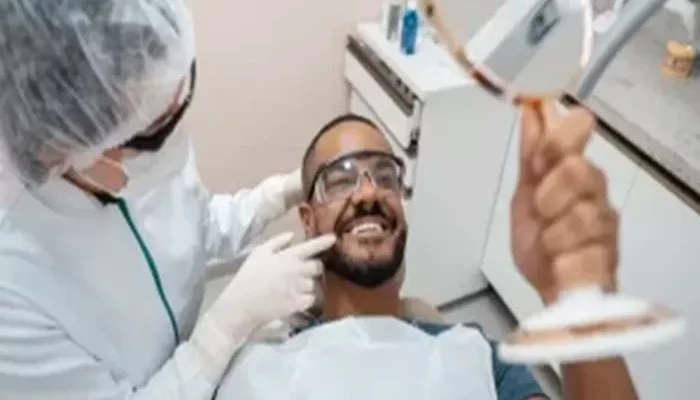Wearing braces is a common step in the journey toward achieving a straighter, healthier smile. However, many patients notice that their teeth appear yellow or discolored after removing their braces. This can be concerning and may lead to questions about oral hygiene, the effectiveness of treatment, and how to restore the natural brightness of their smiles. In this article, we will explore the reasons why teeth may look yellow after braces, the role of oral hygiene, and effective strategies for maintaining a bright smile during and after orthodontic treatment.
Understanding the Discoloration of Teeth
The Nature of Tooth Color
Tooth color can be influenced by various factors, including genetics, diet, oral hygiene practices, and lifestyle choices.
Natural teeth vary in shades, ranging from white to yellowish tones. The outer layer of the tooth, called enamel, is semi-translucent and allows the underlying dentin, which is more yellow, to show through. When enamel becomes thin or damaged, the dentin can become more visible, leading to a yellow appearance.
Factors Contributing to Yellowing After Braces
Several factors can contribute to the yellowing of teeth after wearing braces. Understanding these factors can help patients take proactive steps to prevent discoloration and maintain a bright smile.
Common Causes of Yellow Teeth After Braces
1. Plaque and Tartar Buildup
One of the most significant contributors to yellow teeth after braces is plaque and tartar buildup. Braces create small spaces and brackets that can trap food particles and plaque. If oral hygiene is not maintained, plaque can harden into tartar, which is difficult to remove without professional cleaning. Tartar can lead to yellowing and may also contribute to gum disease.
2. Staining from Food and Beverages
Certain foods and beverages can stain teeth, especially when braces are in place. Common culprits include:
Coffee and Tea: Both contain tannins that can cause discoloration.
Red Wine: The deep pigments in red wine can stain teeth.
Berries: Dark berries like blueberries and blackberries can leave stains.
Sauces: Tomato sauce and curry can also contribute to staining.
Patients with braces may find it challenging to clean their teeth thoroughly after consuming these foods, leading to discoloration.
3. Poor Oral Hygiene Practices
Maintaining proper oral hygiene is crucial during orthodontic treatment. Patients must be diligent about brushing and flossing to remove plaque and food particles. However, many patients struggle to clean around brackets and wires effectively. Inadequate brushing can lead to plaque buildup, which can cause yellowing of the teeth.
4. Enamel Dehydration
Wearing braces can sometimes lead to temporary enamel dehydration. When the enamel becomes dehydrated, it can appear dull and more yellow. This effect can be more pronounced immediately after braces are removed, as the teeth may take some time to rehydrate and regain their natural luster.
5. Changes in pH Balance
Orthodontic appliances can alter the pH balance in the mouth. A more acidic environment can lead to enamel erosion over time, making teeth appear yellower. This is particularly true if patients consume acidic foods and drinks, such as citrus fruits and sodas, without proper dental care.
The Importance of Oral Hygiene During Orthodontic Treatment
Establishing a Good Oral Hygiene Routine
To prevent yellowing of teeth while wearing braces, it is essential to establish a good oral hygiene routine. Here are some tips for maintaining optimal dental health during orthodontic treatment:
Brush Regularly: Brush your teeth at least twice a day using a fluoride toothpaste. Pay special attention to the areas around brackets and wires.
Use an Interdental Brush: An interdental brush can help clean between the brackets and wires more effectively than a regular toothbrush.
Floss Daily: Flossing is crucial for removing plaque and food particles from between teeth. Use a floss threader or orthodontic floss to make the process easier.
Rinse with Mouthwash: An antimicrobial mouthwash can help reduce plaque buildup and freshen breath.
Regular Dental Check-Ups: Schedule regular visits to the dentist for professional cleanings and check-ups. Your dentist can remove tartar buildup and provide personalized advice on maintaining oral hygiene.
Addressing Yellowing After Braces
1. Professional Teeth Cleaning
If you notice yellowing after your braces are removed, consider scheduling a professional teeth cleaning with your dentist.
Dental hygienists can remove tartar and surface stains, helping to restore the natural brightness of your teeth.
2. Teeth Whitening Options
After braces, many patients explore teeth whitening options to address discoloration. Some common methods include:
Whitening Toothpaste: These products can help remove surface stains and improve the overall brightness of your smile.
Over-the-Counter Whitening Kits: Many patients opt for at-home whitening kits that contain bleaching agents. Follow the instructions carefully for safe and effective results.
Professional Whitening Treatments: Your dentist can provide professional whitening treatments that are more potent than over-the-counter options. These treatments can deliver faster and more noticeable results.
3. Maintaining Good Oral Hygiene Post-Braces
After braces are removed, it is crucial to continue practicing good oral hygiene. This includes:
Brushing and Flossing: Maintain a regular brushing and flossing routine to prevent plaque buildup and staining.
Avoiding Staining Foods: Limit the consumption of foods and beverages that can stain your teeth. If you do indulge, rinse your mouth with water afterward.
Regular Dental Visits: Continue to see your dentist for check-ups and cleanings to monitor your dental health and address any concerns.
Conclusion
Experiencing yellowing of teeth after wearing braces can be disheartening, but understanding the causes can help patients take proactive steps to maintain their smiles. Factors such as plaque buildup, staining from food and beverages, poor oral hygiene, enamel dehydration, and changes in pH balance can all contribute to discoloration.
By establishing a solid oral hygiene routine, seeking professional dental care, and exploring whitening options, patients can address yellowing and enjoy a bright, confident smile after orthodontic treatment. Remember, maintaining good oral hygiene is essential not only for aesthetics but also for overall dental health. If you have concerns about your teeth after braces, consult your dentist for personalized advice and treatment options.
Related topics:

